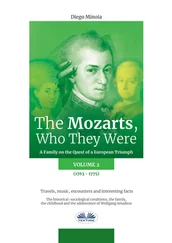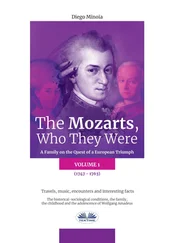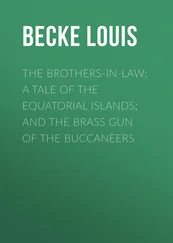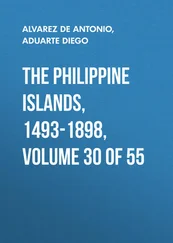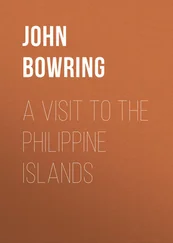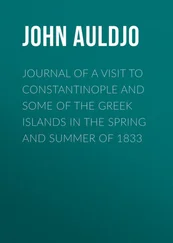Diego Aduarte - The Philippine Islands, 1493-1898 - Volume 32, 1640
Здесь есть возможность читать онлайн «Diego Aduarte - The Philippine Islands, 1493-1898 - Volume 32, 1640» — ознакомительный отрывок электронной книги совершенно бесплатно, а после прочтения отрывка купить полную версию. В некоторых случаях можно слушать аудио, скачать через торрент в формате fb2 и присутствует краткое содержание. Жанр: foreign_antique, foreign_prose, Историческая проза, на английском языке. Описание произведения, (предисловие) а так же отзывы посетителей доступны на портале библиотеки ЛибКат.
- Название:The Philippine Islands, 1493-1898: Volume 32, 1640
- Автор:
- Жанр:
- Год:неизвестен
- ISBN:нет данных
- Рейтинг книги:4 / 5. Голосов: 1
-
Избранное:Добавить в избранное
- Отзывы:
-
Ваша оценка:
- 80
- 1
- 2
- 3
- 4
- 5
The Philippine Islands, 1493-1898: Volume 32, 1640: краткое содержание, описание и аннотация
Предлагаем к чтению аннотацию, описание, краткое содержание или предисловие (зависит от того, что написал сам автор книги «The Philippine Islands, 1493-1898: Volume 32, 1640»). Если вы не нашли необходимую информацию о книге — напишите в комментариях, мы постараемся отыскать её.
The Philippine Islands, 1493-1898: Volume 32, 1640 — читать онлайн ознакомительный отрывок
Ниже представлен текст книги, разбитый по страницам. Система сохранения места последней прочитанной страницы, позволяет с удобством читать онлайн бесплатно книгу «The Philippine Islands, 1493-1898: Volume 32, 1640», без необходимости каждый раз заново искать на чём Вы остановились. Поставьте закладку, и сможете в любой момент перейти на страницу, на которой закончили чтение.
Интервал:
Закладка:
Although father Fray Bernardo would have been pleased to be left forever among his Indians, the province felt that it had need of him for higher duties, and elected him as provincial in 1596. He gave a noble example as head of the province, and was most wise, kind, and prudent in his visitations. At one time, finding it necessary to chastise one of his subordinates, he began the punishment upon himself, compelling the guilty person to scourge him severely while they two were alone. Then he proceeded to scourge the man who was in fault, who, considering what had preceded, received his chastisement with great humility and amended his life. The fervent love of God of father Fray Bernardo was manifest in all that he said and did. The high esteem in which he was held spread from the Philippinas to Nueva España, so that the tribunal of the Holy Office in Mexico made him its commissary-general in all these islands. On some occasions he showed the gift of prophecy, foretelling the deaths of some persons, or declaring the deaths of those who were at a distance. Once when a governor assembled a great fleet against the Dutch enemies, he was obliged to obtain the necessary revenue by great oppression of the Indians and the poor, since the royal treasury did not yield a sufficient amount for the undertaking. Father Fray Bernardo was greatly grieved by this course of procedure, and strove to remedy it without success. When the governor was about to set out, father Fray Bernardo declared to him that he would never return; and, in point of fact, he died in Malaca without ever seeing the enemy. 12 12 This was Juan de Silva, who died on April 19, 1616 (see Vol. XVII, p. 279).
The persecution in Japon was revealed to him before it occurred. Being asked how he knew of the threatening danger, he said that he inferred it from certain stars in the sky, which resembled a comet threatening Japon. His companion when he had looked was unable to see any comet, or anything like one. His love and charity kept constantly increasing, and there were continually on his lips the words, “Let us love God; let us love God.” He sent what he could to the needy and persecuted Christians in Japon, and wrote to Mexico to get such assistance for them as he could obtain. He was always most loving and kindly to all the religious.
At the end of his term as provincial, he would have been glad to live and die among his children in Pangasinan, but was detained in Manila by his duties as commissary of the Holy Office. Yet every year he used to make a visit to Pangasinan, where he was received as an angel from heaven, and sometimes carried almost by force to distant villages, by Indians who came more than twenty leguas for the purpose. His arrival was like a feast-day. The people crowded to confess to him, and to listen to his spiritual exhortations. They put off the settlement of their most weighty differences to submit them to his judgment. They sometimes crowded about him to kiss his hand or his scapular so that he could not move. When he was a second time elected as provincial, his devotion to the duties of his office resulted in his death. The stormy weather preventing him from going by sea to Nueva Segovia, he made the journey by land, traveling through the swamps and lowlands of Yllocos 13 13 A letter written by the Franciscan Fray Pedro de Alfaro to Fray Juan de Ayora, commissary in Manila, under date of Canton, October 13, 1579, and existing (in copy) in Archivo general de Indias (with pressmark, “Simancas-eclesiastico; cartas y expedientes de personas eclesiasticas vistos en el consejo; años 1570 á 1608; est. 68, caj. 1, leg. 42”), says of the Ilocos district: “Also it should be noted by your charity and the superiors who shall come that the province of Ylocos is the destruction and sepulcher of friars; for it is known how the first who went there returned, while I found the next ones, although they had come there so short a time before, with very ill-looking, flabby, and colorless countenances, and brother Fray Sebastian (may he rest in glory), smitten with stomach trouble. His sickness began there, and there was its ending. In consideration of this, and of the common rumor and report of all, I do not believe that it is a district where we can live.” The sick friar here mentioned was Sebastian de Baeza, who, at the time Alfaro wrote, had just died on a ship in Canton Bay.
and over the Caraballos, some rough and lofty mountains, where he was caught by a baguio or hurricane. The rivers rose so that he was unable to go on. Captain Pedro de Rojas, his son in the faith, had gone with him to keep him company. The hardships of their journey were such that both men fell sick; and father Fray Bernardo, in fear of immediate death, kept praying to the Lord that he would prolong his life until they reached a place where he could receive the sacraments. Arriving in Abulug, Captain Pedro de Rojas was given up by the physician; but the father, in spite of his advanced age, seemed likely to recover. He was deeply grieved that he – who was of no use in the world, as he said – should be saved, while the captain had given up his life simply to accompany him. He prayed the Lord that he might change places with the captain, who soon afterward began to amend; while father Fray Bernardo within twenty-four hours fell sick again in Camalayugan, and felt that his disease was mortal. On the eighth of November, the octave of All Saints, he departed from this vale of tears, to be with those who are in glory. His death caused great grief in Pangasinan and Manila. Double honors were shown to him in our convent, first as provincial, and second as commissary-general of the Holy Office. At the latter service father Fray Antonio Gutierrez preached, recounting much of what has here been written. After his death, a religious had a vision of his soul going to glory. In the provincial chapter in the following year, honorable mention is made of father Fray Bernardo in a Latin eulogy, recording his illustrious virtues, his marvelous success in the conversion of the province of Pangasinan, and the sacrifice of his life to the duties of his office.]
Chapter V
The election as provincial of father Fray Melchior Mançano, and the situation in Japon at this time
When the sad news of the death of the provincial was learned, the electors assembled at Binalatongan, a village of Pangasinan, on the fifteenth of April, 1617, and elected as head and superior of the province father Fray Melchior de Mançano, 14 14 Melchor Manzano came to Manila in 1606, and ministered in the Cagayán missions until he was chosen provincial in 1617. In 1621 he was appointed procurator of the province at Madrid; and he died in Italy, about 1630, as bishop-elect of Nueva Segovia.
who was at that time vicar of the convent of the city of Nueva Segovia. He was a very prudent and devout character, a professed son of the convent of the order in Ocaña; and had been made, on account of his great ability and his successful studies, a theologue at the college of Sancto Thomas at Alcala. In this province he had governed many of the best convents with great approbation; and his term as provincial was very useful to the province, augmenting it greatly, as will be narrated.
[Now that the churches in all Japon were torn down and all the priests expelled, as Safioye supposed, it seemed to him time to begin the persecution of Christianity. The commencement was made in the kingdom of Arima, which was under the direct government of the emperor. The officers upon whom was laid the carrying out of this persecution did their work with cruelty and insolence. When the news of the beginning of the persecution reached Figen, twenty courageous Japanese went from Nangasaqui to Arima to confess the faith, and died a glorious martyrdom. Some others who purposed to follow in their footsteps had not the courage, and recanted when they saw the dreadful torment which awaited them. As soon as father Fray Thomas del Espiritu Sancto, or Zumarraga, the vicar-provincial of our religious who were in hiding, heard of this persecution in Arima, he despatched father Fray Jacintho Orfanel to go to the aid of the persecuted Christians, and soon afterward sent father Fray Juan de Los Angeles Rueda to go thither also. They were followed by the father commissary of the Order of St. Francis, with three other religious of his order. The efforts of the religious in hearing confessions, giving the sacraments, and comforting and strengthening the persecuted Christians, were of great value. It seemed unwise, however, to enter the city of Arima itself, where guards had been set to prevent entrance and egress; for if the emperor should learn that any religious had remained in Japon, the persecution was likely to be very much more severe. The Christians in Nangasaqui prepared themselves, and were prepared by the religious, for the beginning of the persecution in that city. When everything was ready, the persecution was suspended on account of a war between the emperor and Fideyori, the son of the previous emperor and the true heir to the throne. 15 15 After the battle of Sekigahara (1600) Iyeyasu had left Hideyori (the infant son of Hideyoshi), with his mother, in the castle of Osaka. After this child grew to manhood, he incurred the jealousy of Iyeyasu, which was doubtless aggravated by his intimacy with the Jesuits, and the shelter given by him to many discontented Japanese, both heathen and Christian. Armies were raised on both sides, and on June 4, 1615, the castle of Osaka was carried by assault, and burned, Hideyori and his mother both perishing. See Murdoch and Yamagata’s full account of this war, its causes, and its immediate results (Hist. Japan , pp. 507–567); cf. Rein’s Japan , p. 306.
The officers contented themselves with publicly burning a great number of rosaries, crosses, and other Christian emblems taken from Arima. Father Fray Alonso Navarrete had assumed the dress of a Spanish layman and was beaten for trying to rescue from the fire some rosaries. Our religious obtained the sacred relics of a number of the blessed martyrs. The emperor was victorious over Fideyori by treachery. During the progress of the war the Christians had peace; and the fathers did a mighty work in strengthening their courage, and in perfecting them in the faith. Many, however, of the Christians, for the lack of ministers, had begun to forget the matters of the faith and even their own Christian names. Some of the Franciscan fathers were captured, and thrown into prison; but the fathers of our order escaped. After the fall of Usaca and the disastrous close of the war, the persecution broke out again. The fathers were scattered among various kingdoms, but were prevented, by the very close watch which was kept, from entering Satzuma. The father vicar-provincial alone, with father Fray Francisco de Morales and father Fray Joseph, remained in Nangasaqui, going out at night only, in secular dress. This lasted until the death of the emperor, in the year 1616. Nangasaqui being the metropolis of Christianity in Japon, where the number of Christians was greatest and their spirit resolved and determined, the emperor did not dare to treat the Christians there with as much severity as elsewhere. In spite of the exposure of our ministers in Japon, not one of the members of our order died a natural death, but all were crowned with the crown and aureole of martyrdom.]
Интервал:
Закладка:
Похожие книги на «The Philippine Islands, 1493-1898: Volume 32, 1640»
Представляем Вашему вниманию похожие книги на «The Philippine Islands, 1493-1898: Volume 32, 1640» списком для выбора. Мы отобрали схожую по названию и смыслу литературу в надежде предоставить читателям больше вариантов отыскать новые, интересные, ещё непрочитанные произведения.
Обсуждение, отзывы о книге «The Philippine Islands, 1493-1898: Volume 32, 1640» и просто собственные мнения читателей. Оставьте ваши комментарии, напишите, что Вы думаете о произведении, его смысле или главных героях. Укажите что конкретно понравилось, а что нет, и почему Вы так считаете.



